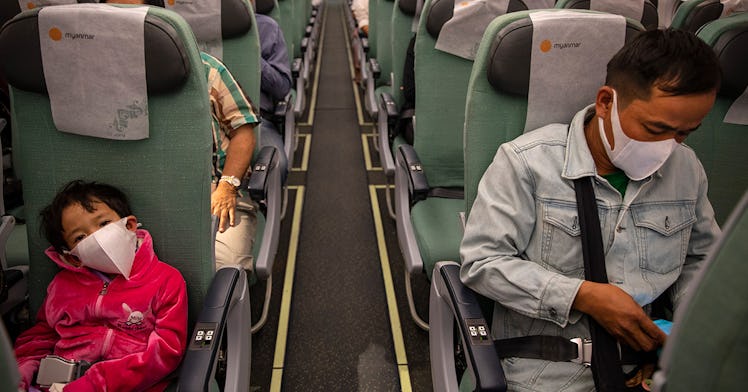Harvard Professor Says Flying Is Safe and We Can Make It Even Safer
Airplanes might not be as dangerous as you think

Flying feels like a pretty bad idea right now. Going to the airport means not self-quarantining at home. Sitting shoulder-to-shoulder with strangers on an airplane means not social distancing. Breathing recirculated air also feels dangerous, as if you’re sharing an oxygen tank with a bunch of potentially infected strangers.
Of course, just because something seems bad doesn’t mean it’s actually bad. Joseph Allen, an assistant professor of exposure assessment science at the Harvard T.H. Chan School of Public Health, laid it out in an op-ed for the Washington Post, arguing that flying is already pretty safe and that making it safer is pretty simple.
Let’s go back to that recirculated air. Airplane ventilation systems use HEPA filters that capture 99.97 percent of airborne particles to do 10-12 air changes per hour. That’s good enough to meet CDC recommendations for COVID-19 patients in airborne infection isolation rooms and quite likely a lot better than the HVAC system at your local grocery store, for instance.
Of course, ventilation systems can’t do anything to stop direct transmission of the virus from your in-flight neighbors, but fortunately, that risk is quite low.
“Billions of people travel by plane every year, yet there have only been a handful of documented disease outbreaks attributable to airplanes in the past 40 years,” Allen writes. “If planes made you sick, we would expect to see millions of people sick every year attributable to flights. We haven’t seen it because it’s just not happening.”
Fortunately, there are some pretty simple changes to air travel that Allen says can make a safe activity even safer.
- Airports can mandate face masks, increase ventilation rates, install touchless bathroom equipment, use germicidal UV light fixtures, add hand sanitizer stations, and implement temperature screening for everyone who enters the building.
- Airlines can mandate in-flight mask use, discontinue in-flight meal and drink service, and choreograph the loading and unloading of airplanes to minimize contact between passengers.
- Passengers can follow all the new rules, wash their hands often, and turn their personal overhead vent on and point it down in order to make flying as safe for everyone as possible.
There’s no argument here that airplanes aren’t vectors for disease, as they clearly are. The argument is that airplanes themselves are actually quite safe and that if people follow the rules they can be even safer.
The biggest thing Allen wants to change about flying is how people see it. In the final paragraph, he writes that we should all consider it a privilege, “one that can be revoked quickly if conditions change or if crowds do not act appropriately.”